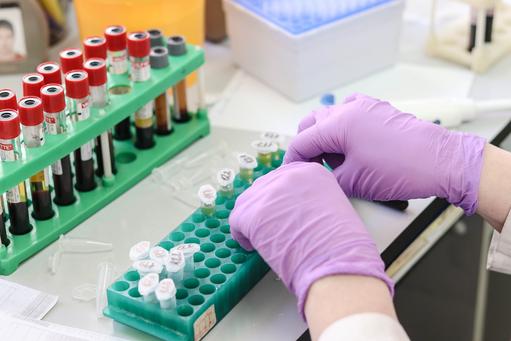Tag

- Bioengineers throughout the world are competing to achieve the Holy Grail: an affordable, point-of-care blood test - liquid biopsy - that detects cancer before any symptoms present
- Success in achieving this will save millions of lives, substantially reduce healthcare costs and make investors, researchers and organisations billions
- Despite significant advances no one has yet achieved the Holy Grail and there remains a substantial gap between researchers’ aspirations and reality
- How close are we?
Alfattani was presenting research findings of a small study at the National Cancer Research Institute’s (NCRI) conference in Glasgow, Scotland, in November 2019, which is an international forum for showcasing cancer advances.
A September 2019 HealthPad Commentary described another early detection test for breast cancer called CanRisk, which has been developed by researchers from Cambridge University’s Centre for Cancer Genetic Epidemiology and has the potential to identify women with different levels of risk of breast cancer.
Alfattani and bioengineers from the universities of Nottingham and Cambridge are players in a vast and rapidly evolving international army of researchers engaged in an intensely competitive global race to develop an affordable, point-of-care, early detection test (EDT) for cancer based upon a liquid biopsy and next generation sequencing technologies. The Holy Grail is for such a test to detect cancer cells in an asymptomatic patient, locate the tissue of origin and give that person an early diagnosis when treatment is more likely to be successful; and to do all this with 100% accuracy.
Although Alfattani’s research study is modest, her findings are potentially clinically relevant because they are on the Holy Grail therapeutic pathway, and her preliminary findings suggest that a simple, cheap and easy-to-use blood test - liquid biopsy - could detect breast cancer five years before any symptoms present. If demonstrated to be exquisitely accurate, safe and efficient by a larger study, which already is underway at Nottingham University’s CEAC, Alfattani’s research could be a key to saving thousands of lives and substantial amounts of money.
Gold standard breast cancer screening
In this Commentary
Partial epidemiology of breast cancer
Alfattani’s research
The Nottingham researchers took blood samples from 90 breast cancer patients at the time they were diagnosed with the disease and matched them with samples taken from 90 patients without breast cancer (the control group). Researchers employed technology (protein microarray), which allowed them to screen the blood samples for the presence of autoantibodies against 40 TAAs associated with breast cancer and also 27 TAAs not known to be linked with the disease. The accuracy of the test improved in the panels that contained more TAAs.
Findings
A panel of five TAAs correctly detected breast cancer in 29% of the samples from the cancer patients and correctly identified 84% of the control group as being cancer-free. A panel of seven TAAs was able to detect disease in 35% of cases with breast cancer and rule out 79% of patients in the control group. The most successful technique was a panel of nine antigens, which correctly identified the disease in 37% of cancer samples and no cancer in 79% of the controls. “The results of our study showed that breast cancer does induce autoantibodies against panels of specific tumour-associated antigens. . . . . The results are encouraging and indicate that it is possible to detect a signal for early breast cancer. Once we have improved the accuracy of the test, then it opens the possibility of using a simple blood test to improve early detection of the disease”, said Alfattani.
David Crosby, head of early detection at the Cancer Research UK charity, said, “Diagnosing cancer at the earliest stages before it grows or spreads gives patients the best chance that their treatment will be successful. So, the potential to detect markers in the blood before other signs appear is promising”.
|
|
|
|

James Brenton
Senior group leader, Cancer Research UK (CR-UK) Cambridge Institute and lead, Functional Genomics of Ovarian Cancer laboratoryDirectory:
Expertise:
James D. Brenton is a senior group leader at the Cancer Research UK (CR-UK) Cambridge Institute and leads the Functional Genomics of Ovarian Cancer laboratory. He qualified in medicine from University College London in 1988 and trained in medical oncology at the Royal Marsden Hospital, Princess Margaret Hospital, Toronto and the Department of Oncology, University of Cambridge. He has been an honorary consultant in medical oncology at Cambridge University Hospitals NHS Foundation Trust since 2001. His PhD work was carried out at the Wellcome Trust/Cancer Research UK Gurdon Institute of Cancer and Developmental Biology and he held a Cancer Research UK Senior Clinical Research Fellow from 2001–2006 at the Hutchison/MRC Research Centre.
His research focuses on the identification of prognostic and predictive markers for therapy in ovarian cancer and identifying mechanisms of drug resistance, with particular emphasis on the genomic profiling of clinical samples and bioinformatic analysis.
He is the chair of the Informatics Advisory Group for the national CR-UK Stratified Medicine Programme and was previously Vice-Chair of the CR-UK Biomarkers and Imaging Discovery and Development Committee. He is a member of the international Ovarian Tumor Tissue Analysis (OTTA) Consortium project approval committee, the SGCTG Protocol Review Committee, NCRI ovarian cancer subgroup and the CR-UK Clinical Fellows Mentor Panel.
view this profile












